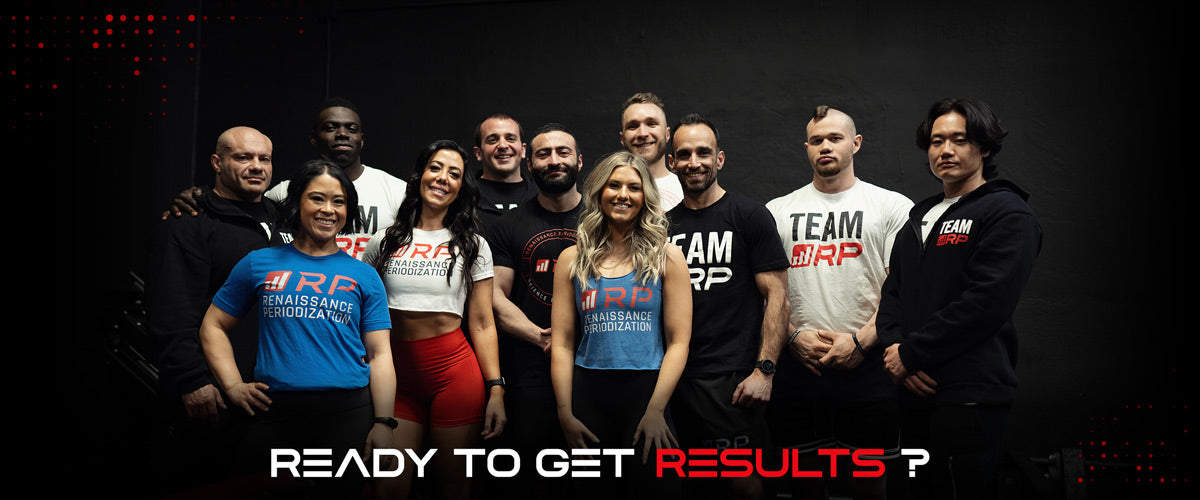By: Nick Harden
Ask most people in the gym if they train hard, and you’ll almost always hear “yes.” But if that were truly the case, we’d see way more people making consistent progress.
The reality? Most lifters don’t push themselves nearly as hard as they think.
Training hard isn’t just about sweating or feeling tired. It’s about using the right principles to stimulate growth and push your limits. Let’s break down what actually training hard looks like—and how to make sure you’re progressing over time.
The Deload Test: Are You Actually Pushing It?
One of the simplest ways to check your intensity is to ask:
“When was the last time I deloaded?”
If the answer is “never” or “I don’t feel like I need to,” you’re probably not training hard enough. Over time, intense training should accumulate enough fatigue that you need a structured deload to recover and reset for your next training cycle.
Technique First: The Foundation of Real Effort
Pushing yourself doesn’t just mean going heavier—it means training smarter, with proper form that maximizes muscle growth and minimizes injury risk.
Here’s what that should look like:
- Controlled eccentrics – Lower the weight slowly to keep tension on the muscle.
- Explosive concentrics – Push with intent. Drive every rep like you’re trying to launch through the ceiling.
- Full range of motion (ROM) – Half-repping? You’re shortchanging growth and risking imbalances or injury. Full ROM stimulates full development.
Skip these basics, and you risk poor muscle development and injury—especially in common weak links like knees and elbows.
Soreness, Pump & Reaching Failure
You don’t need to feel sore or pumped after every workout—but if you never do, something’s probably off.
If you’re not getting that deep muscle burn or post-session soreness, ask yourself:
- Are you actually engaging the target muscle?
- Or are you just moving weight from point A to point B and hoping for the best?
One key factor here is proximity to failure—often tracked using Reps in Reserve (RIR) or Rating of Perceived Exertion (RPE). When you consistently stop too far from failure, you’re likely missing out on growth stimulus.
This isn’t a huge deal when you're new to lifting (and gaining muscle just by showing up), but once those beginner gains wear off? The details start to matter.
Most People Don’t Know What “Failure” Feels Like
Here’s the truth: if you’ve never actually trained to failure, you might have no clue where that line is.
Sometimes, the best way to learn is with a spotter. Push until they have to help you finish the set.
Case in point: my wife.
She thought she was stopping with one rep in the tank on incline bench. On her first set, she stopped at 7 reps. On the next, I told her not to stop until I physically had to take the bar from her.
She hit 19 reps.
Twelve more than she thought she had. That moment completely changed how she approached training—and her performance has been climbing ever since.
If you suspect you're in the same boat, try a true failure set with a spotter. You might be pleasantly shocked by how much more you’ve got.
Progressive Overload Isn’t Just Adding Weight
To keep building strength and size, you’ve got to challenge your muscles with more over time—not just in load, but in volume and intensity.
That’s where two key concepts come in:
 Each week, you slowly increase sets, reps, or load—working your way from MEV to MRV. Once you reach that ceiling, you deload to reset fatigue and grow even more during the next cycle.
Each week, you slowly increase sets, reps, or load—working your way from MEV to MRV. Once you reach that ceiling, you deload to reset fatigue and grow even more during the next cycle.
Why This Matters: Avoid the “1:1 Trap”
Here’s the problem if you go all-out every session:
You overreach → then crash → then need a week to recover.
That’s a 1:1 ratio of hard work to rest. Over the course of a year, that’s 6 months training, 6 months recovering.
But if you train hard for 5 weeks, then deload on the 6th?
You’re getting nearly 10 full months of productive training per year.
That’s a massive difference in long-term results—and you get to spend more time doing what you actually enjoy: training.
Don’t Let Your Nutrition Be the Bottleneck
Even with perfect training intensity, poor nutrition can hold you back.
- Too little carbs? Your nervous system and muscles won’t perform at their best.
- Not enough protein? You’re short on the building blocks for growth and recovery.
If your training feels stuck, your diet might be the culprit. Fuel matters just as much as form.
To learn more about carbs and performance, check out this article!
What If You’re Training Too Hard?
Most people undertrain—but a few push too hard for too long. That can lead to chronic fatigue, poor recovery, and stalled gains.
If you feel beat up week after week, it might be time for:
- An active rest phase (2–4 weeks)
- A training pivot—swap barbell work for dumbbells, or shift from hypertrophy to a strength block
- A resensitization phase to refresh the stimulus and avoid burnout
It’s not about doing less. It’s about training smarter so you can keep improving.

By applying these principles, you’ll train harder and smarter—and start seeing results that match your effort.
Let’s Make Your Time in the Gym Count
If this article hit home and you’re realizing your training or nutrition might not be as dialed in as you thought—let’s fix that. With 1:1 coaching, I’ll help you structure a personalized program that uses progressive overload the right way, sharpens your technique, aligns your effort with your goals, and keeps you recovering and growing week after week. You’re already putting in the time—let’s make sure it actually pays off.
Find Dr. Nick Harden on…
Instagram: @drnickharden
